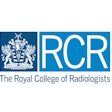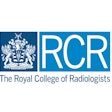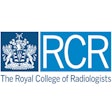
This is a key month for the European medical device community's understanding of the impact of Brexit on industry. On 1 September, the U.K. government announced guidelines on the changes to how medical devices are to be regulated in the U.K. as of 1 January 2021, when the transition period ends. The announcement was closely followed by the second reading in the House of Lords (the upper house of the U.K. legislature) of the bill that will ultimately bring these changes into law.
The important point is that the U.K. government's existing regulatory authority -- the Medicines and Healthcare Products Regulatory Agency (MHRA) -- will take over responsibilities that are currently those of the European Union (EU). In due course, we will see products carrying the new United Kingdom Conformity Assessment (UKCA) mark instead of or as well as the well-known CE Mark.
Implications for vendors
But what does this mean for medical imaging companies? Let's answer that by splitting the companies in to three groups: U.K.-based companies supplying to the U.K., non-U.K.-based companies supplying into the U.K. (including those based in the EU), and U.K.-based companies supplying to the EU.
For UK-based companies intending to supply initially, or only, into the U.K., there will be very little change for the time being. Until 30 June 2023, CE marking will continue to be used and recognized, and certificates issued by existing "Notified Bodies" will continue to be valid in the Great Britain (GB) market. The key addition, however, is that companies will need to register themselves and their products with the MHRA before the products are placed on the GB market. (Editor's note: for an explanation of the difference between U.K. and GB, go to Britannica.com.)
Currently, registration is not expensive -- at the time of writing, it is 100 pounds (around 108 euros) to register a new or changed device on the database -- but it's not clear if this price will remain the same in the future.
From 1 July 2023, it will be mandatory to place the UKCA Mark on products being supplied into the GB market. From 1 January 2021, this will an option instead of, or as well as, the CE Mark. However, CE marking will still be required for products being supplied to Northern Ireland (NI) market -- the UKCA Mark will not apply there
For non-UK-based companies intending to supply into the U.K., the above points will apply. But in addition, as of 1 January 2021, these companies will have to appoint a U.K. Responsible Person (UKRP).
U.K.-based companies intending to supply to the EU must continue to do what they do now, but they must also appoint an EU Authorised Representative (AR) per the EU regulations, in addition to any UKRP. GB-based ARs will no longer be allowed; ARs need to be in the EU or in NI.
So what is the difference between what you have to do to place a CE Mark on a product versus a UKCA Mark?
 Mike Pogose.
Mike Pogose.The mechanics are that a U.K. Approved Body will need to perform the conformity assessments that formerly the EU Notified Body (NB) would do, and they will need to authorize both a CE mark and (in due course) a UKCA mark, which may cost extra. It is not clear whether EU-based Notified Bodies will, and at what point in time, register as U.K. Approved Bodies. Additionally, a UKCA submission must reference British Standards (BS) rather than the current EU standards.
Also, does having both a UKCA mark and a CE mark mean double the work (and double the cost)? At the moment -- fortunately -- it looks like the answer is no. All we can say for now is that the draft post-Brexit U.K. regulation is essentially a clone of the EU Medical Device Regulation. So, from a U.K. perspective, the MDR will still be replacing the Medical Device Directives.
You can read the longer version of this article on the Hardian Health website.
Mike Pogose is senior consultant, medical device project and quality assurance, at Hardian Health.



















